
- ASEAN’s Hard Look at Indo-Pacific
- Indo-Pacific: Post-Modern Regionalism
- E-commerce in ASEAN: Views from the Businesses
- ASEAN Aviation Takes to the Sky
- Is ASEAN Ready for Renminbi?

- Reviewing the 32nd ASEAN Summit
- Julie Bishop on ASEAN-Australia Relations
- Unpacking the Rakhine Issue
- Surakiat Sathirathai on the Advisory Board on the Rakhine Issue
- Puppetry Arts in Southeast Asia

- Urgent steps to save ASEAN biodiversity from the brink
- Why the EU’s anti-palm oil measures do not help the environment
- Unpacking ASEAN’s trade surplus with the US
- What lies ahead for the Korean Peninsula after the Pyeongchang Winter Olympics
- Constraints of Southeast Asia’s engagement with the DPRK
July – August 2017
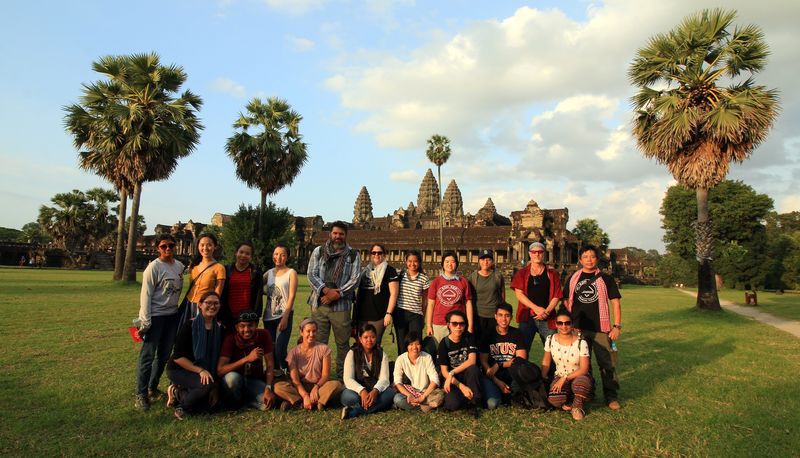
The 2017 field school cohort at Angkor Wat. (Credit: Dr. Ea Darith).
The Archaeology Unit (AU) at ISEAS – Yusof Ishak Institute (ISEAS) in collaboration with Cambodia’s APSARA Authority conducted an archaeological Field School from 28 July – 16 August at the Tonle Snguot site, located near famed Angkor Thom complex near Siem Reap, Cambodia. This session was the fifth Field School conducted by NSC in Cambodia. The Tonle Snguot site is one of close to 100 late Angkorian public hospital complexes that were commissioned under the reign of Mahayana Buddhist King, Jayavarman VII (1181-1218 CE). Major discoveries included a 2.0 metre Dvarapala statue (guardian); a Bhaisjyaguru statue (Medicine/Healing Buddha), a Surya- or Candra-Vairocana statue (Sun or Moon Boddhisattva), and a rich archaeological assemblage dominated by 12th-14th century ceramics.
There were a total of 14 students who participated in the Field School from a variety of East Asian Summit (EAS) countries including Australia; Cambodia; China; India; Indonesia; the Philippines; Thailand; Vietnam; and the United States of America.
The itinerary featured interactive site visits and informal site lectures. Hands-on training sessions took participants and staff through 2000 years of complex socio-political and economic evolution. Topics also included urbanisation, exchange dynamics, cultural influence, and multi-directional agency among pan-Asian networks. The pivotal points of analytical foci and departure spanned the famed Khmer polities of Funan (1st-6th centuries CE), Chenla (7th-8th centuries CE), and Angkor (9th-14th centuries CE).
The main event included the coordinated archaeological and anthropological operations at Tonle Snguot site, a 12th/13th century hospital / chapel complex associated with Jayavarman VII. Efforts will build upon previous studies of similar sties and general themes of urbanism, industries (such as the medical industry), settlement, and specialized site activities. The final Field School leg in Singapore provided an important comparative component, added training opportunities, facilitated library access and allowed participants to finalise and present team projects. Forthcoming results will provide valuable contributions to science, archaeology and history.
Dr. D. Kyle Latinis (Field School Director) and Dr. Ea Darith (Field School Co-Director; APSARA Authority) designed and implemented the project with funding provided by the Ministry of Foreign Affairs, Singapore as part of an EAS initiative. Primary institutions included ISEAS and APSARA Authority. Supporting partners included the Ministry of Culture and Fine Arts, Cambodia; the Royal University of Fine Arts, Cambodia; the Hungarian Southeast Asian Research Institute; and an extensive list of other organisations and independent researchers who provided invaluable input, advice, opportunities and field assistance. Equally important, local communities were actively involved in the research and training. Our sincere gratitude is extended to all contributors.
2017 Field School Administrative History
2017 Archaeological Field School Announcement E-flyer (PDF, 490kb)
2017 Archaeological Field School Booklet (PDF, 3.59mb)
2017 Archaeological Field School Application Form (.doc, 213kb)
2017 Archaeological Field School Frequently Asked Questions (PDF, 423kb)
Image Gallery
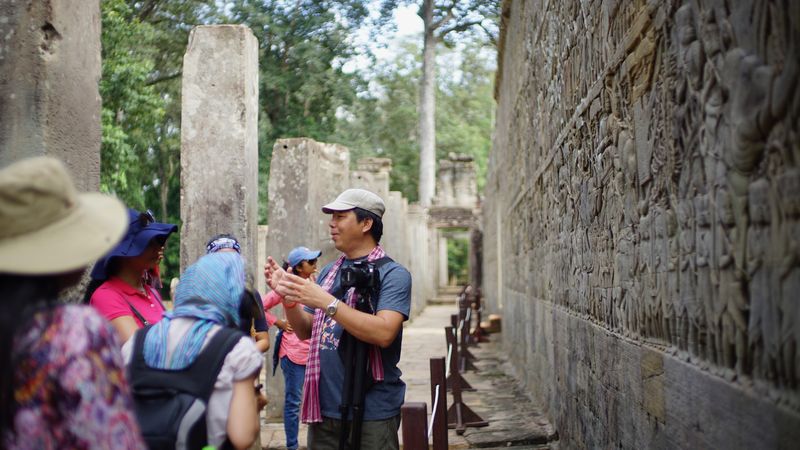
Dr. Ea Darith (Field School Co-Director; APSARA Authority) explaining reliefs at Bayon temple. (Credit: D. Kyle Latinis)
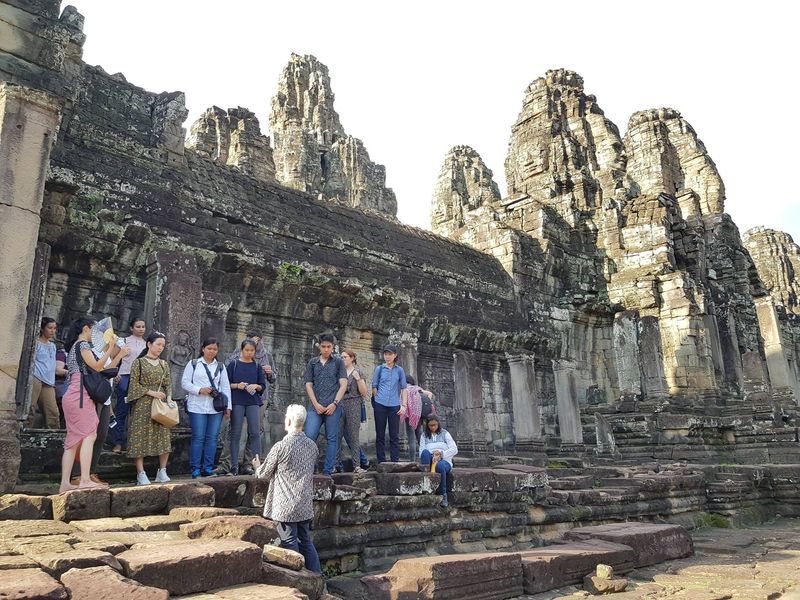
Dr. D. Kyle Latinis (Field School Director; ISEAS – Yusof Ishak Institute) briefed participants on possible ancient hospital structures on reliefs at the Bayon. (Credit: S. T. Foo)
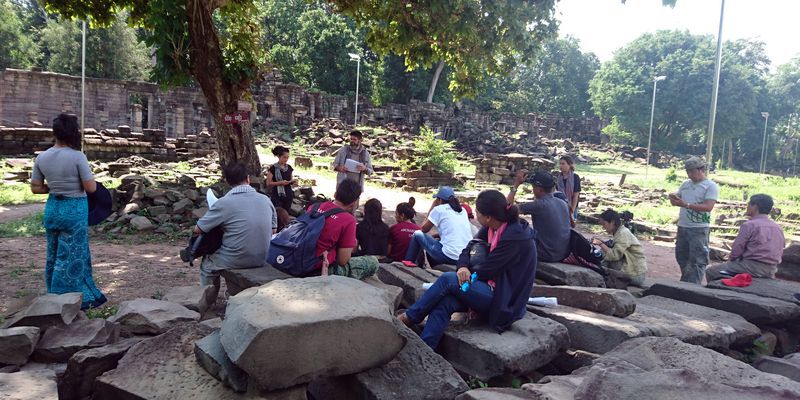
Dr. Hélène Njoto (ISEAS – Yusof Ishak Institute) conducted an art history workshop at Banteay Chhmar with the assistance of Dr. Károly Belényesy (HISTORIARCH – HUNINCO) during a fieldtrip on Angkorian road networks led by Mr. Im Sokrithy (APSARA Authority) and H.E. Dr. Tan Boun Suy (APSARA Authority). (Credit: D. Kyle Latinis)
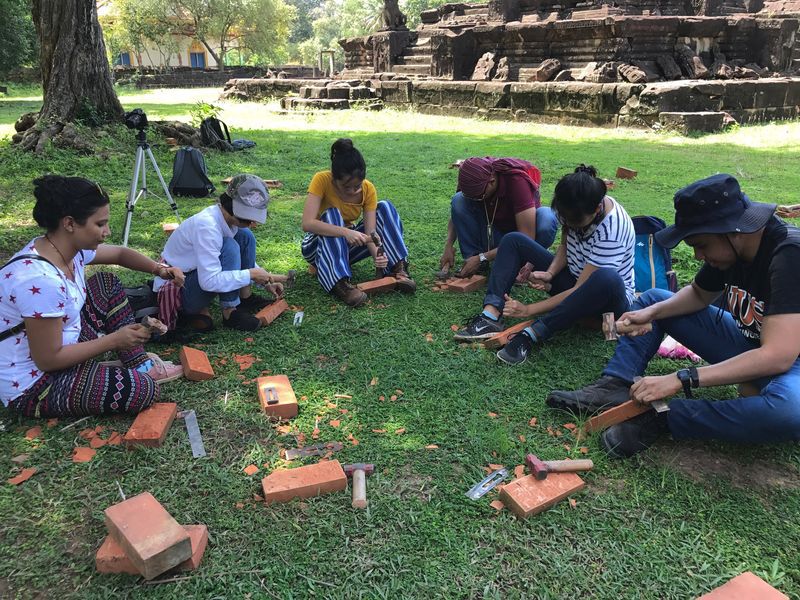
Field school participants took part in a brick temple conservation workshop at Bakong temple by APSARA Authority. (Credit: Chan Wai Peng)
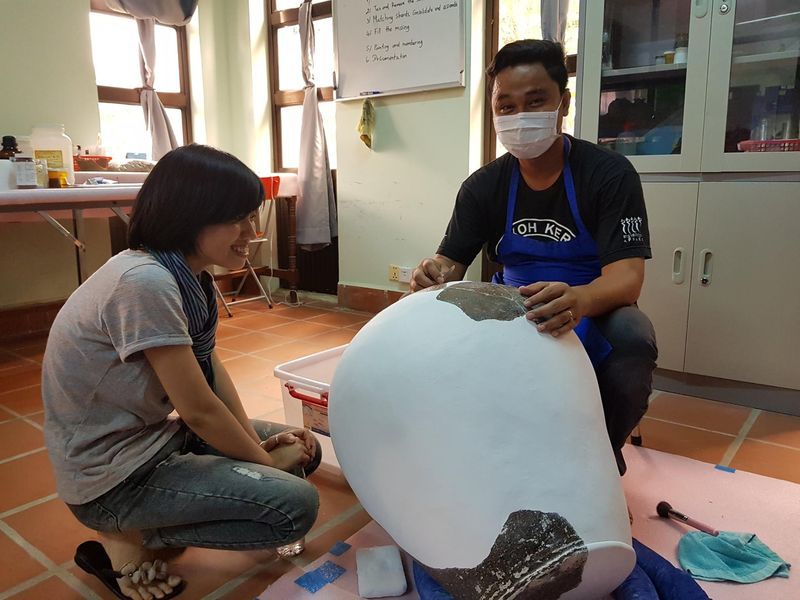
Field school participants learned about ceramic analysis and conservation at APSARA Authority. (Credit: S. T. Foo)
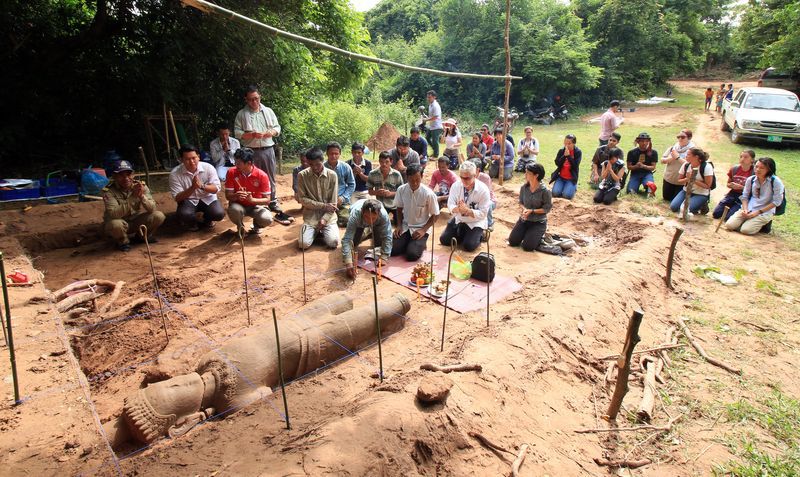
During excavations, a 2.0 metre guardian statue was found (likely in situ). The finds were documented and a small ceremony was conducted in accordance to local customs prior to the removal of the statue for safekeeping by the authorities. (Credit: Dr. Ea Darith)
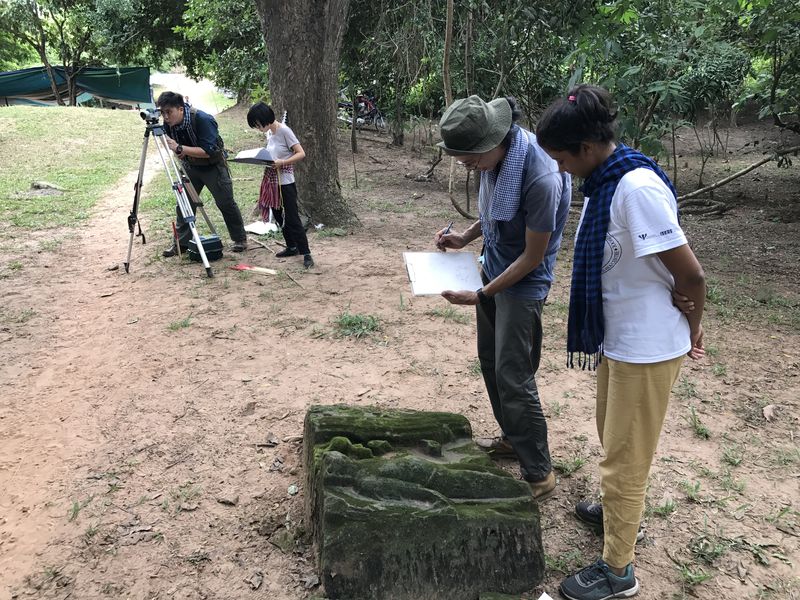
Mr. Michael Ng and Mr. Aaron Kao (ISEAS – Yusof Ishak Institute) conducted survey and drawing training for the field school students. (Credit: Chan Wai Peng)
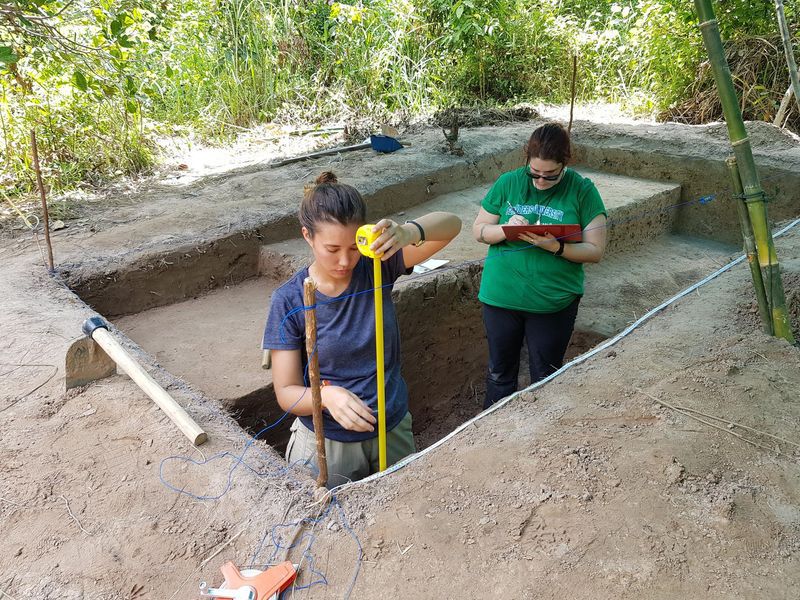
Field participants drawing stratigraphic profiles at Tonle Snguot. (Credit: S. T. Foo)
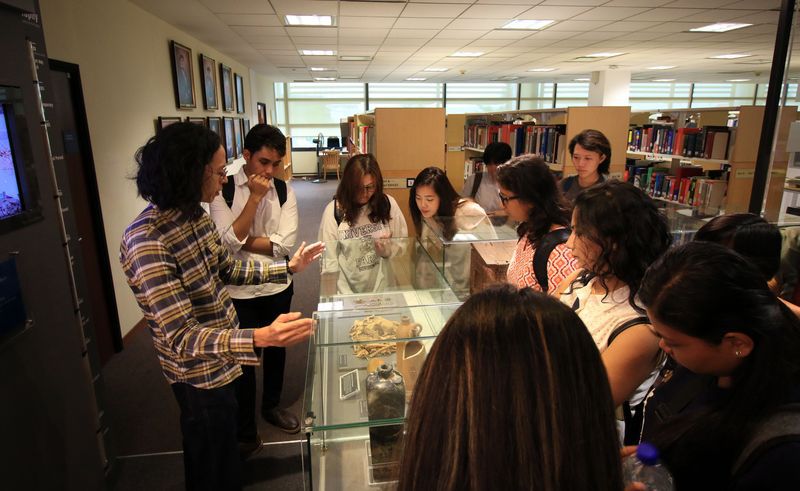
Mr. Aaron Kao (ISEAS – Yusof Ishak Institute) briefed participants on finds displayed in the Archaeology gallery, ISEAS library. The ISEAS library is open to the public and contained finds from excavations in Singapore and from collaborative efforts in Cambodia. (Credit: Ea Darith)
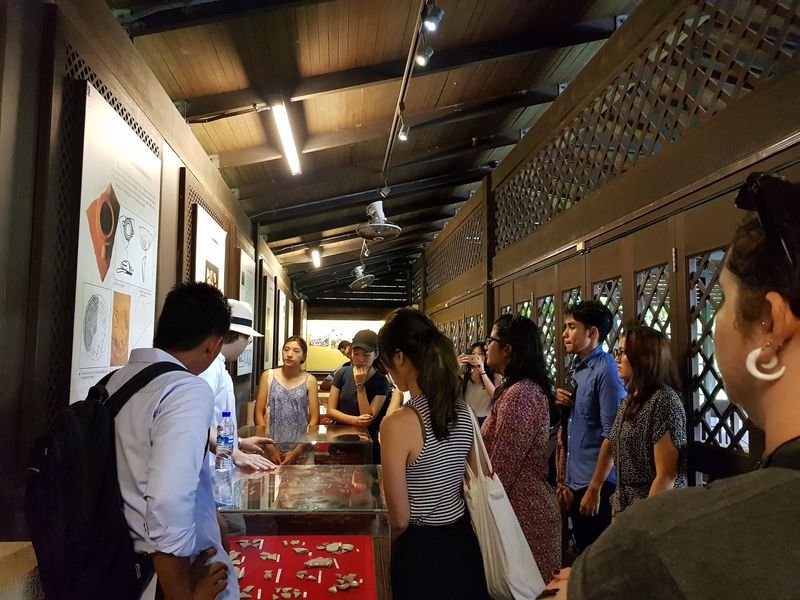
Mr. Lim Chen Sian (ISEAS – Yusof Ishak Institute) briefed participants on the various archaeological finds at Fort Canning. (Credit: S. T. Foo)
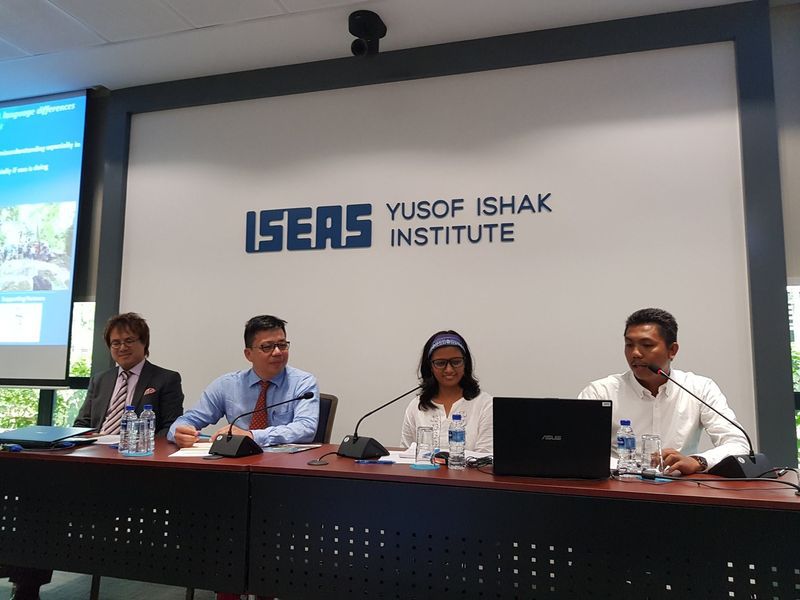
The field school participants gave presentations at the ISEAS – Yusof Ishak Institute, which was moderated by Dr. Ea Darith (Field School Co-Director, APSARA Authority) and Mr. Lim Chen Sian (ISEAS – Yusof Ishak Institute). (Credit: S. T. Foo)

- Singapore Foreign Minister Dr Vivian Balakrishnan shares his views on ASEAN’s future and outlines Singapore’s priorities as ASEAN Chair in 2018
- HE Le Luong Minh reflects on his tenure as ASEAN Secretary-General and the regional organisation in his last official interview as SG
- Southeast Asia’s “report card” on Trump’s visit to region
- Making sense out of the Indo-Pacific concept
- A tribute to the late Dr Surin Pitsuwan and his contributions to ASEAN and regional integration
- Outlook at 50: Multi-stakeholders’ perspectives on the future of tertiary, vocational and technical education in ASEAN
Seminar on “APEC in 2017 and Beyond: Striving for Open Economies and Delivering on Inclusive Growth”

- The 31st ASEAN Summit
Highlights from the ASEAN Summit, the East Asia Summit and other meetings
- The 19th Chinese Communist Party National Congress
Xi Jinping’s second term and its implications for Chinese foreign policy and Southeast Asia
- TPP Revisited
The future of cross-Pacific and regional trade through the CPTPP
- ASEAN-India Relations
Overcoming challenges, realising potentials and endless possibilities
- Outlook at 50: Religiosity in Southeast Asia
An in-depth look into trends and transformations in the most religiously diverse region in the world

- ASEAN at 50: Then & Now
- Defining Southeast Asia’s Geopolitical Identity
- Thoughts from ASEAN Secretaries-General and Dialogue Partners
- The Genesis and Evolution of ASEAN Centrality
- The Future of ASEAN
- Champions of ASEAN Economic Integration
- A Map of ASEAN’S Global Engagement

- Analysis of the 50th AMM and Related Meetings
- Is ASEAN a Community?
- The Sino-Japanese HSR Race in ASEAN
- Outlook at 50: Demographic Trends in Southeast Asia
- Coping with an Ageing ASEAN
- Insider Views: EU High Representative Federica Mogherini on ASEAN-EU Relations
- Know Your ASEAN: SEA Games



